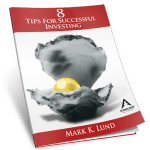Tip Number 1: Look at the SAI of the mutual funds you own.

Active management is the attempt of either an individual or a money manager to try to out-perform the stock market rates of return by actively trading individual stocks and/or engaging in market timing – predicting when to be invested (in the market) or not be invested (out of the market.)
In order for active mutual fund managers to beat the market, they must perform better than their comparative benchmark. For example, a large cap mutual fund would be compared to the S&P 500 index. Because they are attempting to beat the index they are going to incur some additional fees in this attempt. In order to beat their benchmark, they must include any fees, trading costs, and/or taxes associated with this. Active management creates undisclosed fees to investors called transaction costs and bid/ask spreads. There have actually been studies done to show investors what this active management costs investors. On average, it costs investors an additional 1.50% per year.1
The trading costs are in addition to the fund’s management expense ratio (MER,) found in the funds prospectus. The MER typically includes management fees, 12b-1 fees, and other expenses deducted from fund assets or charged to investors accounts (U.S. Securities and Exchange Commission 2000.) The average MER for active mutual funds is 1.35% per year, which together with an average trading cost of 1.50%, renders a total annual fund cost of 2.85% per year for the average active mutual fund.2
Ken French of Dartmouth’s Tuck School of Business estimates that investors collectively spent $102 billion per year in trying to achieve above-market rates of return.3
To find the fees in the SAI you have to read through the entire document, around 400 pages, to find the numbers, add them up yourself, and divide the total by the number of outstanding shares (found in the prospectus.) This is how you determine the costs per share. This enables you to compare the SAI costs to the “annual expense ratio.” This is a time-consuming process and is one of the reasons why people hire us instead of trying to analyze mutual funds for themselves.
If somewhere deep in your gut, you feel you’ve been misled about your investments and retirement savings and would like answers then you are going to love our free report titled 8 Investor Mistakes You Should Avoid. You will learn little known secrets about investing that the big Wall Street firms and most advisors in general want to keep hidden from you.
1- Virginia Tech University and Boston College “Scale Effects in Mutual Fund Performance.” The role of Trading Cost” examined 1,706 U.S. stock funds from 1995 to 2005. Another study by Edelen, Evans, and Kadlec (2009), in a survey of 1,758 U.S. equity funds, found that trading costs were 144 bps.
2- Morningstar Principia dated 12/31/13 and DFA Return Software dated 12/31/2013
3- Barras, Laurent, Scailet, wermers, and Russ, “False Discoveries in Mutual Fund Performance: Measuring Luck in Estimated Alphas” (May 2008). Robert H. Smith School Research Paper No. RHS 06-043 Available at SSRN: http://ssm.com/abstract=869748







